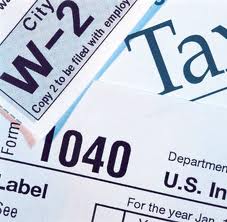
 Obama vs. Romey on Tax Policy
Obama vs. Romey on Tax Policy
One of the major considerations this election season is tax policy, and it’s impact on the middle class and the economy. This table shows a side-by-size comparison of some of the major tax policy items presented by each of the candidates and their proposed tax rates.
| Barack Obama | Mitt Romney | |
|---|---|---|
| Top Marginal Tax Rate | 39.6% | 28% |
| Top Marginal Tax Rate on Long-Term Capital Gains | 30% | 15% |
| Top Marginal Tax Rate on Dividends | 43.4% | 15% |
| Top Marginal Tax Rate on Corporate Income | 28% | 25% |
| Alternative Minimum Tax (AMT) | Replaced with “Buffet Rule” | Eliminated |
| Estate Tax | Maintained | Eliminated |
| Tax Revenue as % of GDP | 19.4% | 18.0% |
Notable, the majority of the Obama tax increases are the result of rolling back the Bush-era tax cuts, which have been extended for the past two years under a special recovery program. While President Obama plans to let these tax cuts expire, Mr. Romney would continue these tax cuts indefinitely under his income tax plan.
Mitt Romney’s tax cuts are centered on capitol gains and corporate income taxes. Some of the major beneficiaries of his tax plan would include investors (who would continue to enjoy 15% or lower income tax rates on capitol gains), and businesses, who would see tax cuts and a complete tax break for foreign-earned income. Romney has also called for a 20% reduction across the board on all tax brackets, while reducing the top tax bracket a total of 7 points from 35% to 28%.
President Obama, on the other hand, has made clear his position of maintaining current tax rates for individuals and families earning under $250,000 per year while raising taxes for individuals in the top tax brackets. Obama’s tax increases will almost exclusively effect the high-net-worth individuals who stand to gain the most from tax breaks under a Romney administration.
The middle class, which will decide this election, will not see a tax increase under either Romney or Obama’s tax plans. Many middle class taxpayers will see a tax decrease if Romney’s 20% tax reduction is passed, but the largest impact of Romney’s tax cuts will remain with those within the the upper tax brackets and the corporate and financial world.
In choosing between the two candidate’s vastly different tax platforms, for the majority of Americans it will come down to principals.  Mr. Romney’s position appeals to individuals who support cross the board tax breaks, while President Obama’s tax plan satisfies those who believe that heavy tax breaks are counter-intuitive in the current financial state .
 How can we improve this page? We value your comments and suggestions!
How can we improve this page? We value your comments and suggestions! Send Instant Feedback About This Page


 Donate BitCoin:
Donate BitCoin: